Top 5 Scheer PAS Alternatives in the Enterprise Market for 2025

Competition is a healthy thing in the world of enterprise platform solutions. Even with all the bells and whistles that Scheer PAS offers as different capabilities as parts of its platform, it’s healthy for anyone looking to solve their business process and integration problems to look for Scheer PAS alternatives or compare the competition. Before we dive into the comparison, here is a quick overview of Scheer PAS.
Scheer PAS – Features at a glance
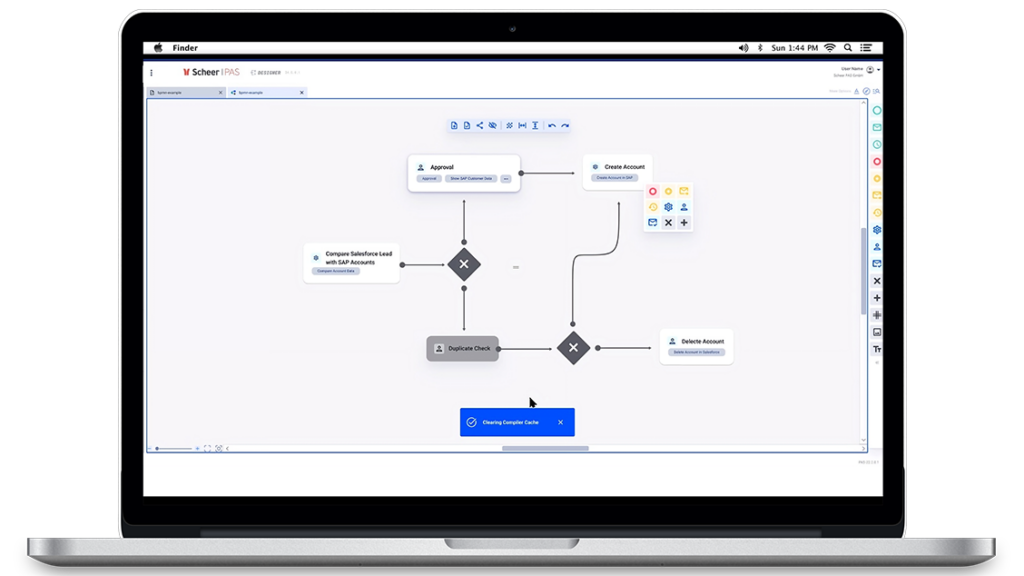
Unlike many other software solutions that aim to solve the easy and simple problems in enterprise IT infrastructure (such as UI creation, simple integrations and citizen developer adoption), Scheer PAS focuses almost exclusively on the complex and difficult hurdles in large enterprise IT landscapes. With its unique combination of
- Integration of IT systems (SAP, non-SAP, legacy, cloud…)
- Powerful orchestration process engine
- Low-Code – Pro-Code interoperability
- API management to leverage existing APIs
- Process mining and more…
…Scheer PAS is well equipped to help companies with their digitisation, digital collection, shadow IT and other IT-related issues. By not only being an iPaaS platform, but also combining all integration capabilities with business processes (something the Scheer brand has been known for in Germany for decades), Scheer PAS has coined the term “Process iPaaS”. By focusing on the actual business processes that can be created and managed in Scheer PAS, the Process iPaaS platform provides real and measurable results from integration initiatives that other platforms often lack. This provides a holistic view of the entire enterprise and a clear vision of the results in terms of efficiency, reduced costs, throughput, quality and delivery.
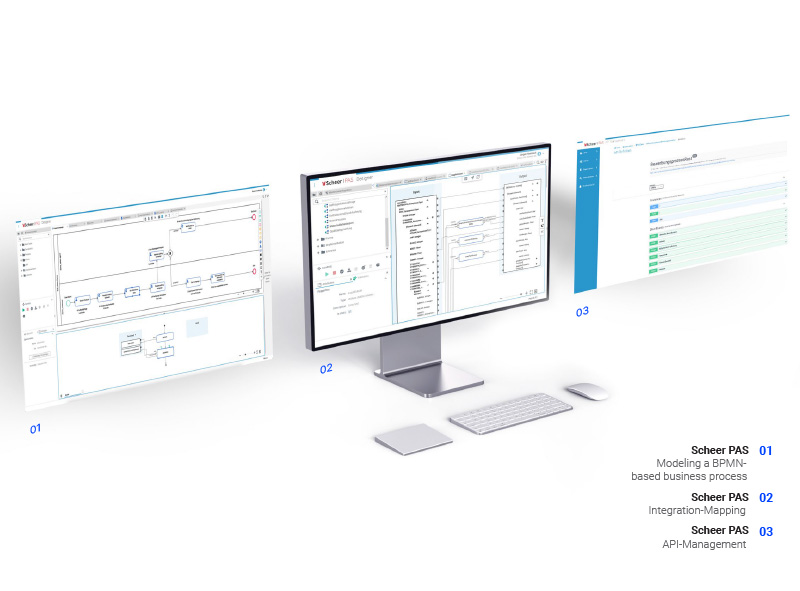
But let’s not get lost in the vast world of Process iPaaS and its unique value to the world of enterprise IT, because we’re here to compare Scheer PAS with its “alternatives”. Yes, you’ve seen the quotation marks for a good reason, because even though other solutions share some of the features of Scheer PAS (and some of them excel at certain things), there is no real alternative to such a unique platform, made in and for European companies. Let’s start with that:
1. Mulesoft vs. Scheer PAS
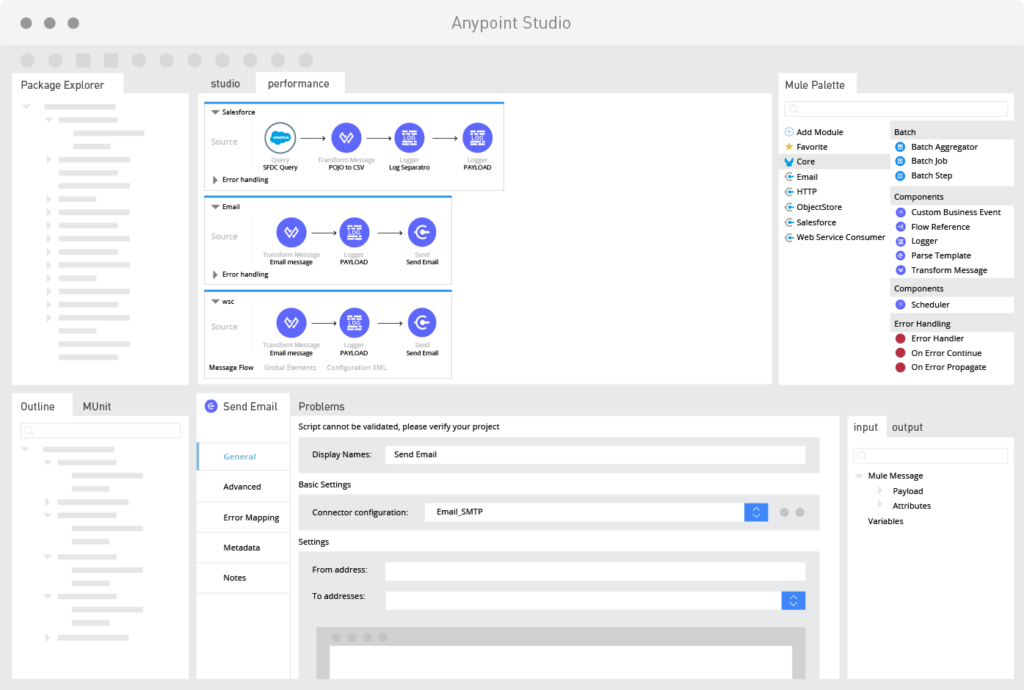
Although MuleSoft is an integration platform with API management and lots of pre-built connectors and templates that allow its users to easily integrate their systems, it’s missing two key components for European businesses in its library. Here are MuleSoft’s most notable highlights:
- Extensive integration capabilities
- Pre-built connectors and templates
- Robust API management
In addition to its ease of use for integration purposes, MuleSoft also has some drawbacks:
- Steep learning curve for specialised projects
- High cost (considering its capabilities)
- Limited support and documentation
- Lack of business process context
All of the above disadvantages could be easily overcome by companies with well-prepared IT departments, except for the last one, which is the biggest obstacle to the platform. The lack of business processes obscures the real business benefits of the MuleSoft platform. With this lack of real transparency in real results, the other stumbling block with MuleSoft is the lack of complexity and comprehensiveness.
Not only does MuleSoft lack the features and capabilities of Scheer PAS, but it also lacks complex business use cases, such as complex business scenarios where SAP, non-SAP, legacy and modern systems are used in the enterprise. While it would be tempting to believe that European companies, especially those in the DACH region (Germany, Austria, Switzerland), have already gone digital and that the majority of their IT problems can be generalised, the reality is often quite different. MuleSoft’s lack of nuance and customisability puts Scheer PAS at the forefront when dealing with complex business scenarios.
2. Frends vs. Scheer PAS
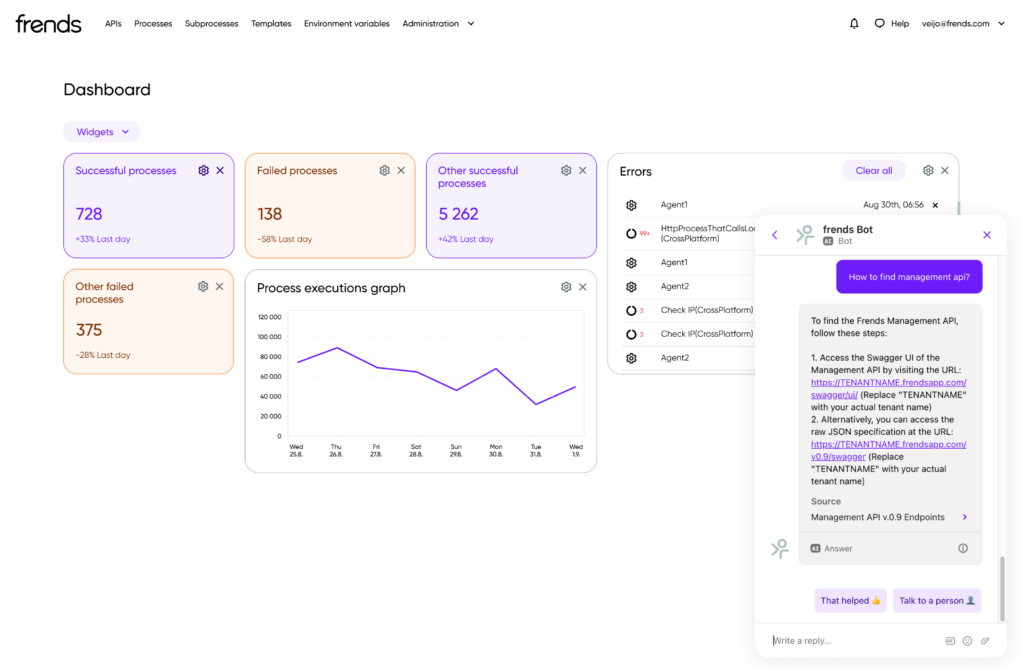
Simplification is usually a good thing. As a Nordic-based iPaaS platform, Frends offers integration, workflow automation and API management. This seems to put it right up there with Scheer PAS. First, let’s look at the notable positives of using Frends for your enterprise needs:
- Low-Code development that empowers citizen developers
- Support for hybrid integration
- User-friendly interface
- Cost efficiency
The most important point that Frends offers to its customers is “simplicity”. Again with the quotation marks, although this time they are there for a different reason. Frends’ offering is indeed easy to use and its fast, giving users the feeling that their IT problems are easily solved. However, there are some drawbacks to this approach:
- Feature limitations
- On-premises requirements for certain integrations
- Microsoft.net technologies as a limiting factor for many organisations
Simplifying integration and workflow automation comes at the cost of limiting the platform’s capabilities to the specific challenges an organisation might face. This, along with the use of proprietary technologies, limits the potential use cases for their platform. Again, the lack of process visibility takes it down a notch for smaller or mid-sized organisations with simple IT challenges that often do not involve many different types of IT systems and services. That’s where Scheer PAS comes in, and the head-to-head comparison with Frends makes it seem as if the two platforms are made for different users, one obviously more complex than the other.
3. Boomi vs. Scheer PAS
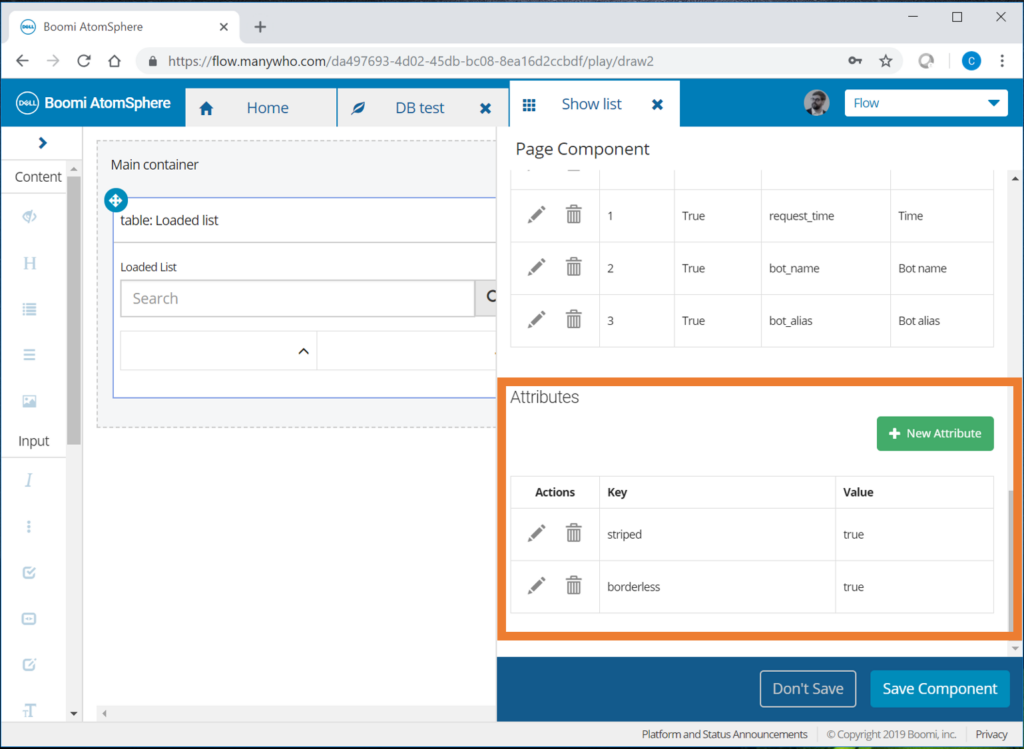
Another case of simplification, great for the less difficult challenges, but insufficient for a serious business use case in a large enterprise. boomi is an iPaaS solution for connecting disparate applications, data and people using a Low-Code approach. Similar to Frends, Boomi also prides itself on having an API management capability with workflow automation and here are some of the benefits of using Boomi:
- Ease of use (for beginners and non-technical users)
- Extensive pre-built connectors
- Strong community support
As in the previous example, Boomi offers a simplified user experience as a key selling point, which could benefit light-weight organisations with little to no complexity in their business processes or IT architecture. Another thing to discuss is the fact that their additional components are all done in separate interfaces, which reinforces the thesis of using it for less complex processes. Speaking of processes, unlike Scheer PAS, boomi doesn’t offer any real integration of business processes into the platform, which further separates the integration effort from the real-world results. All of this could be summarised as a list of disadvantages of using boomi rather than Scheer PAS:
- No complex integration scenarios
- Lack of visible results of integration initiatives
- Learning curve given the need for community support
As such, boomi could be categorised as another great solution for simple workflow automation and citizen developer-facing IT integrations, but it lacks the depth and customisation of more comprehensive platforms such as Scheer PAS. As boomi tries to push Low-Code usage, it loses the customer-specific view of a complex and often quite diverse IT landscape.
4. Camunda vs. Scheer PAS
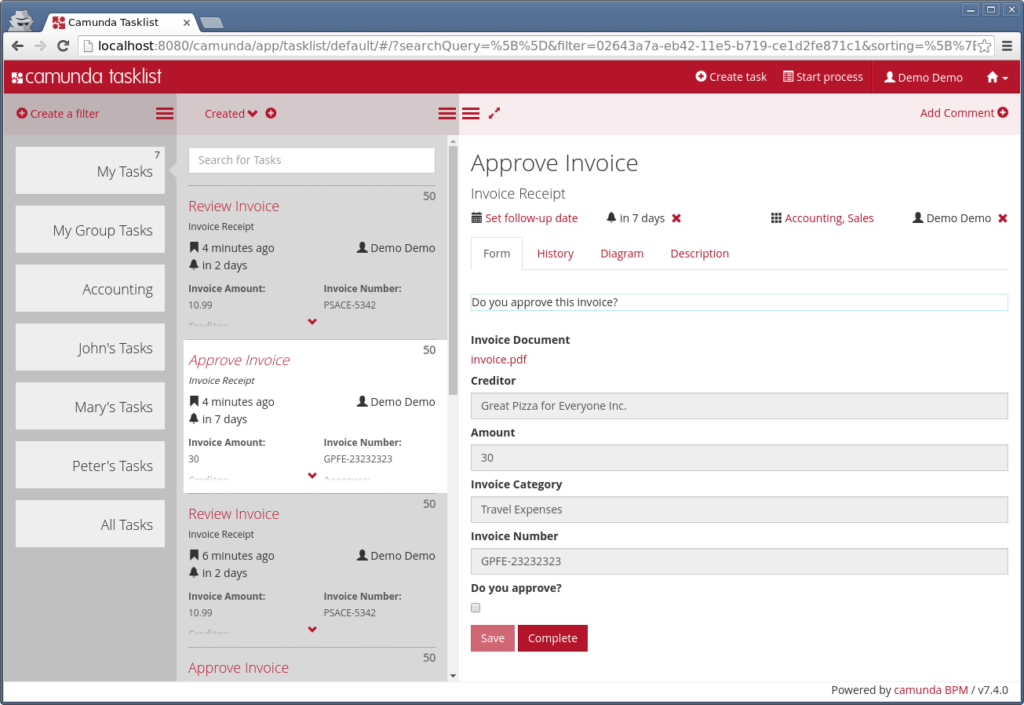
If we look at Camunda instead of Scheer PAS, the story is slightly different to the previous two examples. Camunda presents itself as a process orchestration platform with a strong focus on BPMN models (which Scheer PAS also uses) and decision automation. Its integration capabilities are sufficient, but not nearly as deep and customisable as a large enterprise would want. Let’s start with the things Camunda does well:
- Process-centric platform
- Dedicated business modelling engine
- Low-Code form editor for UIs
- Open-source components
For companies that only want to focus on their business processes, Camunda should be a sufficient solution. However, despite its Low-Code claim for the UIs and a lot of open-source components, Camunda lacks the bridge for both Low-Code and Pro-Code users. This automatically hinders both sides. There are also a few other things missing from Camunda that should be reconsidered:
- Lack of defined data models and type systems for data objects
- No microservice architecture (monolithic setup)
- Initial setup complexity
- No API management for internal and external APIs
- Complex integrations must be done in Pro-Code (manually developed)
When a platform offers both Low-code development, which is more geared towards simple UI creation, and Pro-Code tools, where professional software developers can shine, the lack of connection between these two worlds leaves a lot to be desired and creates the need for companies to rely on professional services. Scheer PAS, on the other hand, uses both Pro- and Low-Code almost interchangeably, providing a smoother experience regardless of the complexity of the projects.
In addition, Scheer PAS’s use of microservices architecture enables it to provide much more comprehensive integration solutions that focus on compatibility as well as performance and scalability. In other words, with Scheer PAS, if a single service fails, the rest of the IT architecture continues to function.
5. Workato vs. Scheer PAS
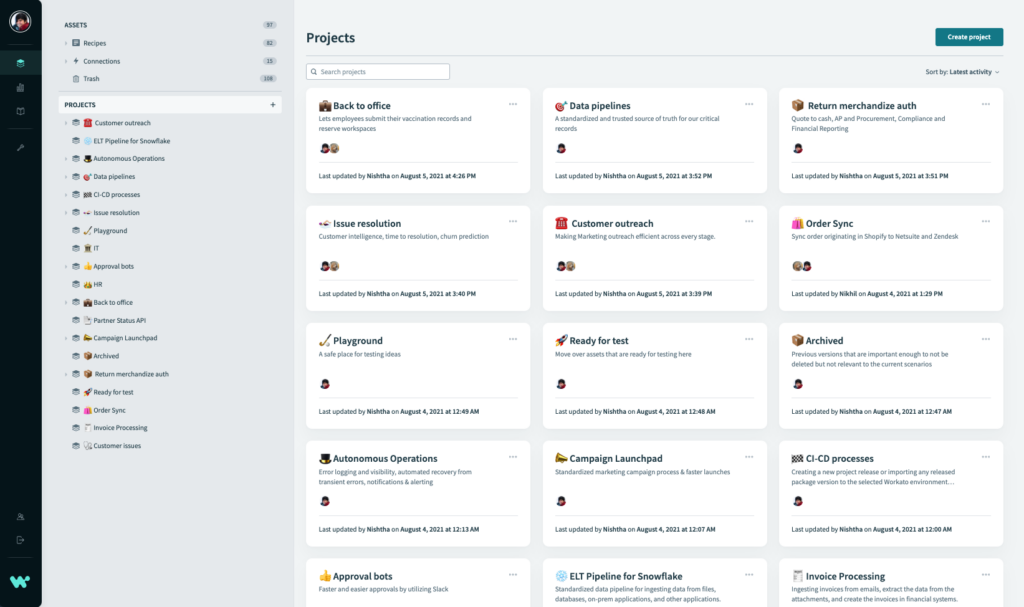
Cloud-based solutions are clearly the future. As such, Workato prides itself on being a #1¸cloud-based integration iPaaS solution with the addition of workflow automation. In addition, not unlike the rest of the offerings, Workato relies heavily on its Low-Code interface and pre-built connectors. Let’s take a look at some of the benefits users get when they choose Workato:
- Ease of use in short and simple workflows
- Extensive (cloud) integrations
- Strong customer support
While the first sentence in this comparison claims that cloud-based solutions are the future of enterprise IT architecture, that future is somewhat idealised. Currently, many large organisations still rely on on-premises systems that are part of their core IT architecture and, more importantly, play a large role in their business processes. This lack of horizontal integration could be an additional challenge for organisations looking to Workato for help. There are additional hurdles for Workato where Scheer PAS easily shines, such as
- Data limitations
- Complexity of custom scripting
- Lack of business process context
In addition to the lack of horizontal IT system integration, Scheer PAS, as a product made in Switzerland and Germany, offers much stronger data governance, especially in the EU, with a GDPR-compliant architecture. In addition, the data integration offered by Workato is nowhere near as deep as the true system integration found in the Scheer PAS platform.
Conclusion
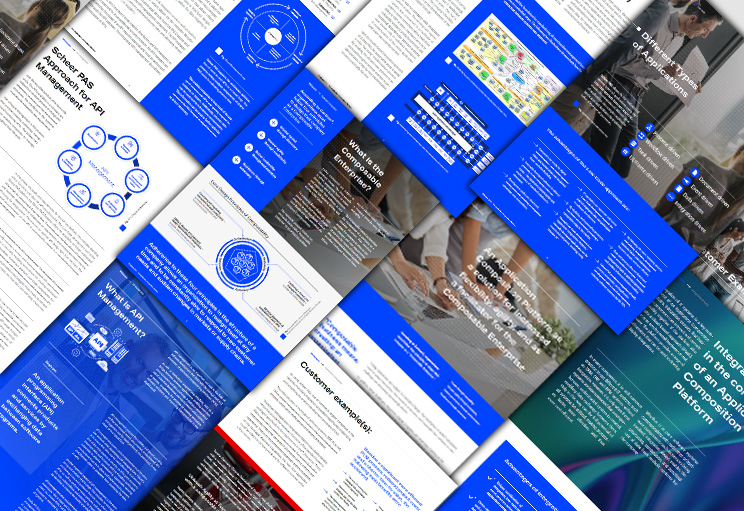
Although many other iPaaS and automation platforms and services excel at certain things, many of them are lacking in both the general requirements of EU businesses and some of the specific things they focus on. As a general observation from the comparisons, all of the above platforms and services are lacking when compared to Scheer PAS:
- Not enough business process involvement
- Real results from integration initiatives
- Complex integrations with both legacy and modern systems
- Horizontal integration between on-premises and cloud systems
- Lack of functionality
- Too much focus on Low-Code approach with either separate or no Pro-Code options
As stated in the text, this does not mean that other platforms should not be considered for simple use cases and similarly simple integration initiatives. Many of these platforms do a very good job of covering specific use cases with pre-built connectors and UIs that help organisations with specific challenges but provide a very weak foundation on which to build their IT landscapes.
By focusing on ease-of-use without providing sufficient documentation and customisation, many platforms often lock users into their ecosystem, which creates a barrier to evolution as complex challenges arise, often with a huge mix of legacy and new systems. Scheer PAS as a platform uses its many capabilities not only to solve specific challenges or automate parts of business processes, but also to create an open, comprehensive, fully-featured and powerful solution for all future challenges, making organisations agile leaders of the future.
For more comparisons with other platforms and to broaden your horizons, please visit this link. To explore the Scheer PAS platform and its powerful capabilities, click here.

The Process iPaaS
Where Process meets Integration


